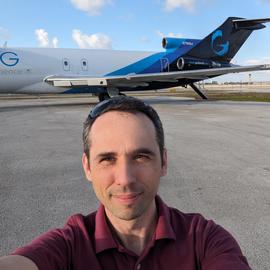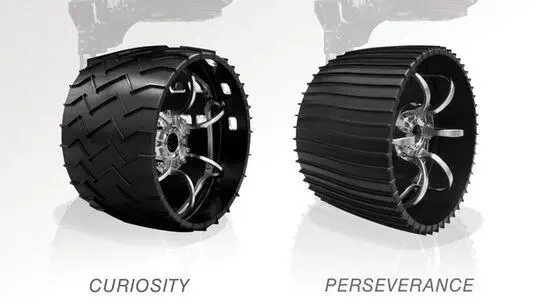Rover traction is a key exploration mission driver, determining for example how steep of a crater wall can be traversed. Our research has investigated the physical processes by which grousers (tractive features that protrude from a wheel rim) actually improve traction, identifying and quantifying the key role of reducing resistance forces associated with forward flowing soil.** These insights contributed to the redesign of the NASA Perseverance Rover wheels, with their higher grouser count relative to Curiosity’s wheels.** We have also demonstrated the advantages of diagonally slanted grousers for point turns performed by skid-steer rovers, a popular rover configuration among several upcoming Lunar missions, including the forthcoming Canadian Lunar Rover mission.
Forough Nassiraei A, Skonieczny K. (2020). Grousers improve drawbar pull by reducing resistance and generating thrust at the front of a wheel. Journal of Terramechanics. 91: 73-84.
Inotsume H, Moreland S, Skonieczny K, Wettergreen D. (2019). Parametric study and design guidelines for rigid wheels for planetary rovers. Journal of Terramechanics. 85: 39-57.
Demishkevich A*, Skonieczny K, Thai BT*. (2024). Experimental Evaluation of Grouser Designs for Efficient Skid Steering. Canadian Society for Mechanical Engineering International Congress. Toronto, Canada.

Concordia University's Aerospace Robotics Lab
Research interests include: Space robotics, Planetary rovers, Robot mobility, Vehicle-terrain interactions, Advanced 3D printing techniques, Robotics excavation & construction, Reduced gravity experimentation, Computer vision and machine learning for robotics applications.
